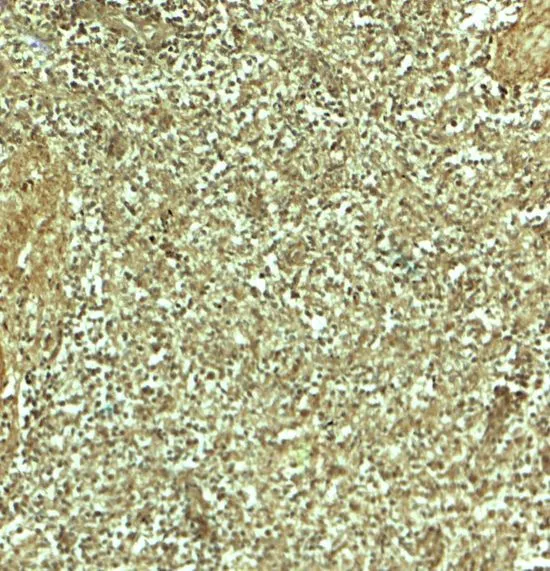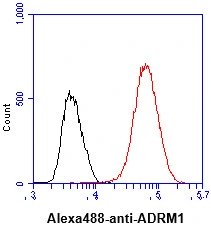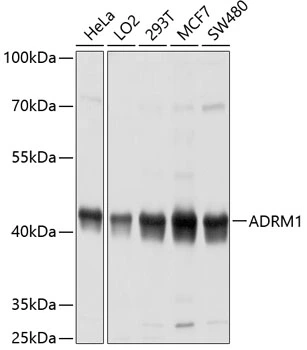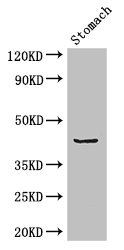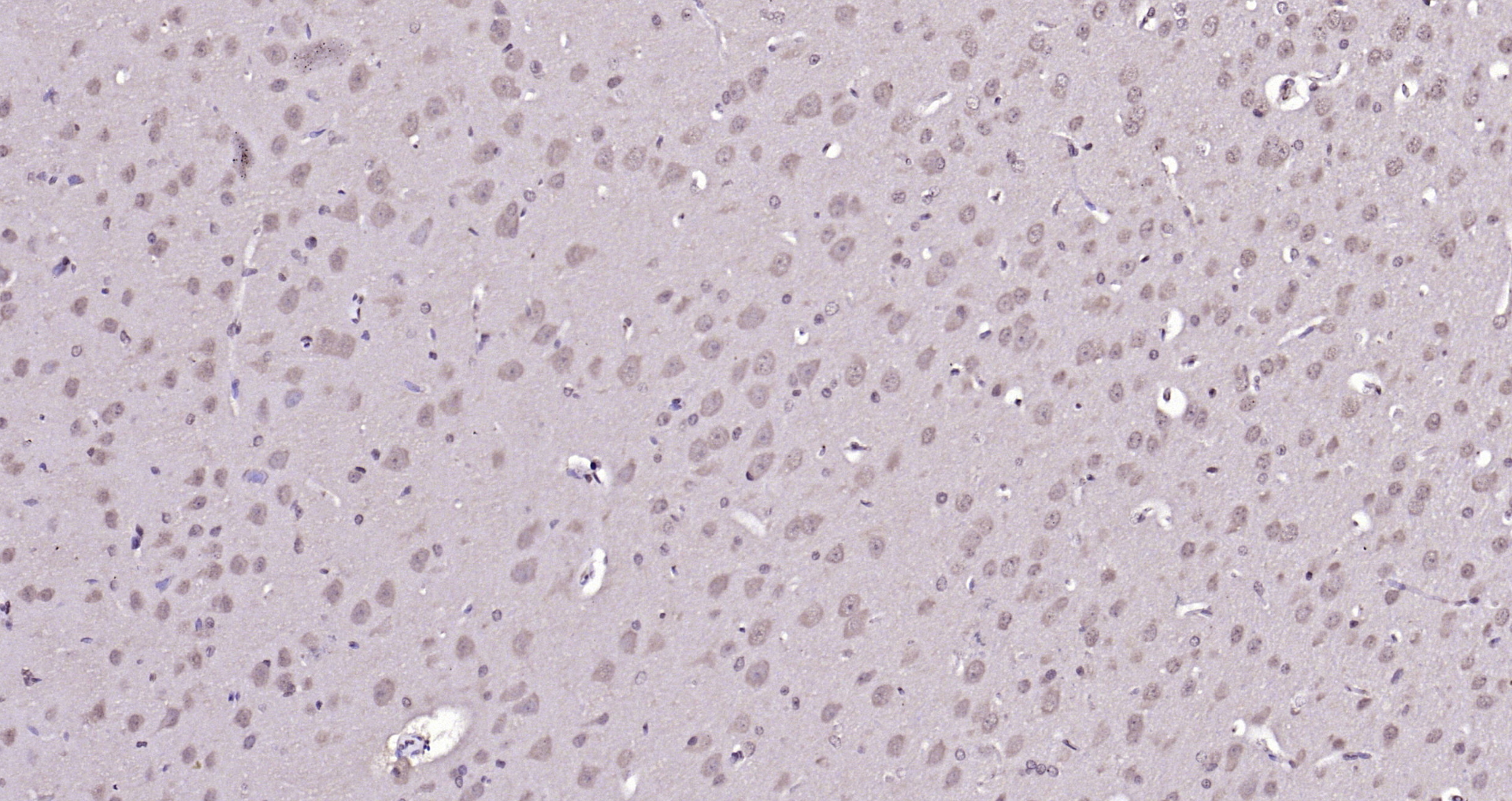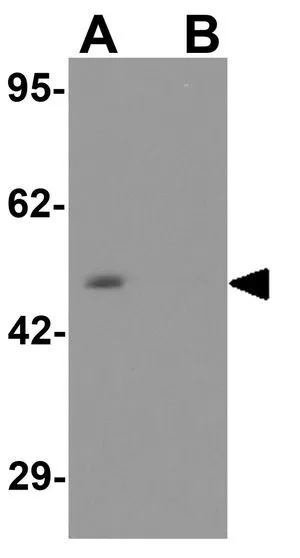
WB analysis of EL cell lysate in (A) the absence and (B) the presence of blocking peptide using GTX17239 ADRM1 antibody. Working concentration : 1 microg/ml
ADRM1 antibody
GTX17239
ApplicationsWestern Blot, ELISA, ImmunoHistoChemistry, ImmunoHistoChemistry Paraffin
Product group Antibodies
TargetADRM1
Overview
- SupplierGeneTex
- Product NameADRM1 antibody
- Delivery Days Customer9
- Application Supplier NoteWB: 1 - 2 microg/mL. IHC-P: 5 microg/mL. *Optimal dilutions/concentrations should be determined by the researcher.Not tested in other applications.
- ApplicationsWestern Blot, ELISA, ImmunoHistoChemistry, ImmunoHistoChemistry Paraffin
- CertificationResearch Use Only
- ClonalityPolyclonal
- Concentration1 mg/ml
- ConjugateUnconjugated
- Gene ID11047
- Target nameADRM1
- Target descriptionADRM1 26S proteasome ubiquitin receptor
- Target synonymsARM-1, ARM1, GP110, PSMD16, proteasomal ubiquitin receptor ADRM1, 110 kDa cell membrane glycoprotein, M(r) 110,000 surface antigen, adhesion regulating molecule 1, proteasome regulatory particle non-ATPase 13, proteasome ubiquitin receptor, rpn13 homolog
- HostRabbit
- IsotypeIgG
- Protein IDQ16186
- Protein NameProteasomal ubiquitin receptor ADRM1
- Scientific DescriptionThe protein encoded by this gene is an integral plasma membrane protein which promotes cell adhesion. The encoded protein is thought to undergo O-linked glycosylation. Expression of this gene has been shown to be induced by gamma interferon in some cancer cells. Two transcript variants encoding the same protein have been found for this gene. [provided by RefSeq, Jul 2008]
- Storage Instruction-20°C or -80°C,2°C to 8°C
- UNSPSC12352203

